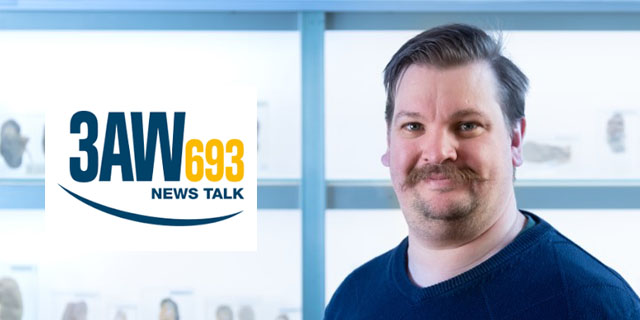Eponyms – and renaming body parts
A/Prof Quentin Fogg from the Dept of Anatomy and Neuroscience discusses the push for changes to medical terms on 3AW Drive.
The list of human anatomical parts name after people is vast – and terms like the Achilles tendon, Adam’s apple and Fallopian tubes are now considered by some to be irrelevant and even misogynistic, with the call out for more practical and descriptive terms for body parts to be widely used.
So should we should stop using eponyms and instead use more accurate terminology? Associate Professor Quentin Fogg, Head of the Fogg Laboratory (Department of Anatomy and Neuroscience) addressed this issue in an interview with Tom Elliot on the 3AW Drive program last week.

“We have medical names for these things, for example the Adam’s apple is the thyroid cartilage and the Fallopian tube is the uterine tube. There are plenty of examples throughout the body where there have been eponymous terms used – and some are still used in clinical settings - but they are not the official terminology for the vast majority of these things,” says Quentin.
“When we are teaching here we try not to use informal eponyms – we may use them to give historical context or to explain the mechanism in which they were discovered but we prefer to medical terms as much as possible. It really comes down to how you teach it” he says.
Hunter's Canal
Quentin explains the historical context for the Hunter’s canal named after John Hunter:
"William and John Hunter were Scottish brothers that became famous in the 1700s. Both were passionate anatomists and conducted ground-breaking work. At the time, coachmen, who drove the horse and cart, were particularly susceptible to popliteal aneurysms - a large dilation of the artery in the back of the knee. This often resulted in death.
John Hunter developed a new procedure to ligate the vessel above the aneurysm, forcing blood to reach the rest of the limb via an alternate route. The surgery was instantly successful and coachmen who suffered this aneurysm returned to full function after undergoing the operation.
Later, after performing a dissection to better understand his own work, Hunter proved that the then-current thinking of repairing the damaged arterial wall was incorrect - and that re-routing the blood past the aneurysm would give better results. This was one of the first clear accounts of scientifically-informed surgery and it laid the foundations upon which vascular surgery was built, and is still practised today."

Image: John's dissection
The space in which this ligated artery sits is the adductor canal (or subsartorial canal), but given its historical significance some still refer to it as Hunter’s canal.
About the Fogg Laboratory
The Fogg Lab in the Dept of Anatomy & Neuroscience, School of Biomedical Sciences, focuses on topographic anatomy, primarily of the limbs. The group’s work is aimed at solving specific clinical problems and developing accurate, evidence-based understandings of detailed anatomy to inform clinical applications. They specialise in dissection, micro-dissection, microscribe digitisation and radiologic imaging.